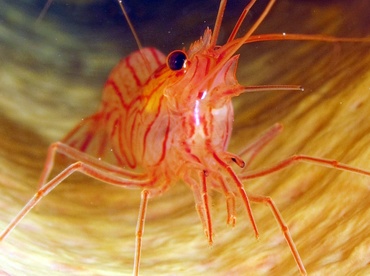

However, in some situations, they have been found to nibble on and pick at the soft polyps of some coral species. Peppermint Shrimps are peaceful and non-aggressive and shouldn’t have any issue coexisting with your fish or corals. Make sure not to mistake them for the destructive Atlantic Peppermint Shrimp that can strip several corals in just one night. Are Peppermint Shrimps Reef-Safe?įortunately, Peppermint Shrimps are generally considered to be reef-safe invertebrates. Prevent any accidental deaths by placing a sponge or netting around the filter opening.

This is often only a concern in compact tanks where the shrimp regularly get close to the filter. It’s also important to note that because these invertebrates are so small, they can easily get sucked up by a strong filtration system. Bright lighting can increase their stress levels, which will negatively impact their health over time.

Peppermint Shrimps are prone to skittish hiding behaviors when frightened. They also offer plenty of exploration opportunities to keep your shrimp busy at night.Ĭonsider using low-level lighting during the day, but be sure to turn it off completely in the evening. You’re welcome to experiment with various habitat options like shell bottoms, tube sponges and rough shorelines.Īuthor Note: Live rocks are ideal as a biologically active surface can better trap food. While you don’t necessarily need a substrate for shrimp tanks, a few inches of gravel or sand will provide more living space for beneficial bacteria. They don’t have any unique preferences concerning the substrate. Peppermint Shrimp thrive in tanks with plenty of hiding places and live stones. Specific gravity: 1.023 to 1.025 Tank Setup Each shrimp needs enough space to claim a small cave or alcove as their own. While these invertebrates are best suited to group environments, they can become aggressive or territorial if the tank is too small. If you’re investing in several, you should add five gallons for every additional shrimp. The recommended tank size for a pair of Peppermint Shrimps is at least 10 gallons (check our 4 Best 10-Gallon Saltwater Tanks). To keep them as happy and healthy as possible, you’ll need to keep these few tank care requirements in mind. While these cleaner shrimp come with the added benefit of lessening your tank’s cleaning needs, they’re not completely self-sufficient. Peppermint Shrimps are beginner-friendly invertebrates that can adapt to a variety of water conditions. Their antennae, which they use to search for food scraps and hiding places as well as to communicate, are often longer than their bodies. Average SizeĪn adult Peppermint Shrimp has an average size of 1.5 to 2 inches. If you’re not interested in breeding, it’s best to buy new young ones once your current shrimp begin showing signs of old age. Peppermint Shrimp have a lifespan of up to 2 years. The intensity and type of tank illumination can also have an impact on your shrimp’s concentration of body pigments. Sick or anxious shrimp will turn almost completely transparent and will refuse to come out of hiding. The color of your Peppermint Shrimp can vary based on their health and stress levels. They’re lined with several red longitudinal lines and several slanted bands. These brightly colored shrimp are semi-transparent and have a creamy-reddish exoskeleton. They’re hardy, undemanding and most active at night.Īuthor Note: While these shrimp will rarely swim out in the open, their stunning color and markings give them an eye-catching profile you won’t want to miss. These saltwater invertebrates are relatively easy to find in stores and often only cost less than $10. Many aquascapers in particular invest in Peppermint Shrimp to eliminate the local population of invasive Aiptasia, which can steal resources and sting fish. Peppermint Shrimp ( Lysmata wurdemanni) will help you take better care of your tank by consuming pesky anemones, food debris, dead materials and more. These shrimps were originally popular with hobbyists due to their striking red color but have since been found to be useful as cleaner shrimps. They live in the shallow coral reefs and near tube sponges where they’re most likely to find food. They’re commonly found in the East Atlantic Ocean, Caribbean Sea, Gulf of Mexico and along the coasts of Florida. Peppermint Shrimps, otherwise called Candy Cane Shrimps, Veined Shrimps or Caribbean Cleaner Shrimps, are popular ornamental invertebrates perfect for reef tanks.


 0 kommentar(er)
0 kommentar(er)
